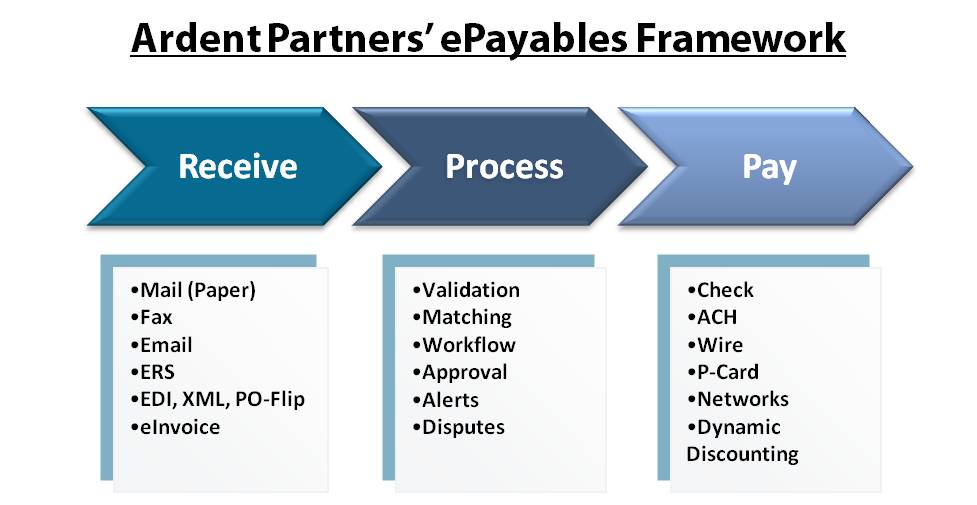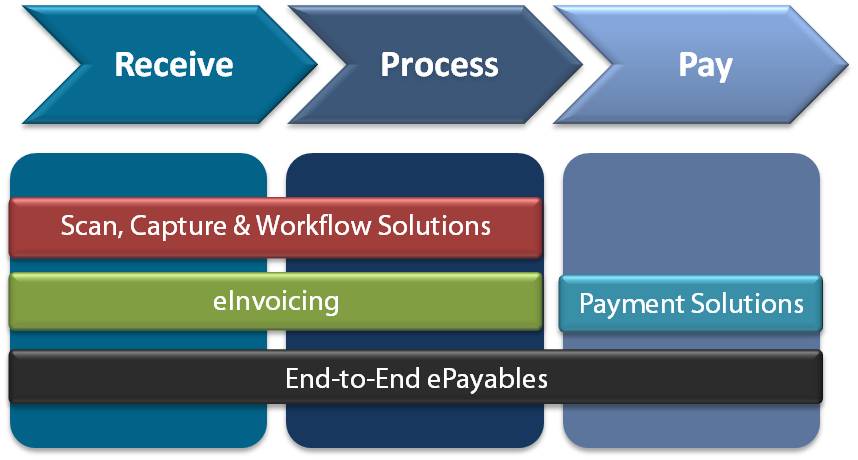We continue to build out our ePayables Study Hall series with this article focused on how to begin a push for AP transformation or “The Approach” (The first two articles are found here – The Challenges and The Opportunities). You can also select the ePayables tag to see all of our articles on the topic. As a reminder we use the term ePayables to define all solutions that automate some part of the accounts payable (“AP”) process.
ePayables Study Hall Part 3 – The Approach
In many enterprises, the accounts payable department is one of the last bastions of early 20th century processes. That’s not something to be proud of. In 2016, any function that has been largely ignored by enterprise executives (like most AP departments) or one that operates in an almost or fully manual way (like a majority of AP departments) can make a fairly straightforward business case for investment and change (like all AP departments). But the case for AP transformation must still be made. It must be comprehensive and sound enough to withstand a strong review and critique by those who fail to see the promise of a 21st century AP function. Before a strong case can be developed, it will be helpful (but not mandatory) to understand the current state of AP operations within the enterprise. To get this view into operations, it will also be helpful (but not mandatory) for AP departments to begin to centralize and organize the team.
Ardent Partners, a leading analyst firm (says me) focused on supply management and accounts payable, views the AP process in three major phases: Phase 1 – Receive (how the enterprise accepts supplier invoices or expense reports); Phase 2 – Process (how the enterprise validates and approves the invoices or expense reports); and Phase 3 – Pay (how the enterprise schedules and makes payments).
Understanding (or defining, as the case will be for many groups) the activities that comprise each step is an important part of understanding the ePayables system requirements and in improving overall processes. We won’t do a deep dive into each primary step in this article, but organizations should at a minimum be able to answer the questions below. Note that for many groups, the approach discussed here is less about understanding the current state (what is happening) as it is an opportunity to clearly define the enterprise’s AP processes (what should happen).
Receive: How many invoices do we receive on a monthly or annual basis? What types or platforms account for the largest invoice volumes (i.e., Mail, email, fax, EDI, image, etc.)? Where are invoices received? Who receives them and what are the steps taken to log the invoice and show that it has been received?
Process: Once the invoice has been logged, what happens? How are invoices validated? What systems capture invoice information and how does invoice information get into those systems? What business rules are employed to ensure that information is coded correctly? What business rules are used to route an invoice for approval? What happens when there are discrepancies or exceptions? How is final approval given/received?
Pay: Once an invoice is approved, a determination is made on how and when it is paid. What criteria are used to make those decisions?
While the current state processes are being captured, the group should also measure key performance and operational metrics, like overall invoice volumes and volumes by invoice segment (i.e., invoice type/format, back-end system, cost center, and supplier), metrics around invoice accuracy, and how the group performs in each phase (accuracy and time metrics).
While we’re on the topic of Ardent ePayables Framework, I thought it might be helpful to share the Ardent Solution Provider Landscape for those that are going down the road of selection an ePayables solution. This landscape categorizes the various types of technologies that automate AP and which parts of the process they automate:
Next Thursday, the next part of this ePayables Hall series will focus on the metrics more explicitly and on how to use them to build a business case for an investment in an ePayables solution and a larger AP transformation project.
In the meantime, if you’re free on October 27 at 2 PM EST, register for this free webinar that I am giving on ePayables: The 2016-2017 Technology and Innovation Outlook, sponsored by Perfect Commerce(registration required).
RELATED ARTICLES
Webinar! Ardent Partners’ 2016-2017 ePayables Technology and Innovation Outlook!
ePayables Study Hall: The Challenges
ePayables Study Hall: The Opportunities
ePayables 2016: Technology’s Impact on AP Reaching the “Next Level” of Performance
ePayables 2016: Technology Innovations that Can Change the Face of AP
Tagged in: ePayables, P2P, Process, Technology










